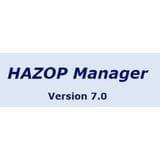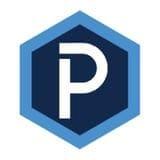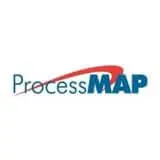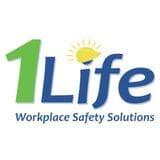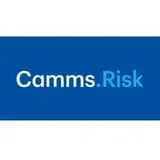- Free Version: Available for teams of up to 10
- Pricing: Premium plan $24/month (with free 30-day trial period)
- Platforms supported: Available on mobile app (iOS and Android) or a web-based software
Why Use SafetyCulture?
SafetyCulture is a leading HAZOP software that enables businesses from various industries to perform their hazard and operability analysis efficiently. With flexible capabilities, SafetyCulture helps you identify, assess, and manage risks that could negatively impact your operations. Standardize your processes and solve logistics problems by doing away with paper inspection records with a mobile-friendly app.
Features:
- Perform hazard and risk analysis with HAZOP, hazard, and risk-related templates. You can also find other free-to-use templates in the Public Library or create a new one that caters best to your business needs.
- Trigger additional questions with the logic feature and attach media-based evidence (photos/videos) for a comprehensive HAZOP report.
- Assign values to multiple choice answers, so each inspection has an overall rating or score.
- Create corrective actions or report issues while categorizing them by associating a priority level to each.
- Keep all your information, inspections, and HAZOP analysis documents in one safe place with cloud-based recordkeeping.
- Build comprehensive HAZOP reports anytime and share them with your team via web link or PDF file.
- Streamline your daily operations and enhance team experience with a simplified system of workflows.
- Monitor the status of identified hazards and risks with real-time and accurate data from the Analytics dashboard.
- Encourage collaboration in your cross-functional HAZOP team. Add multiple members internally with the free plan or externally with the free seats feature in the premium plan.
- Schedule inspections and automatically receive alerts with in-app notifications. Raise your communication game with Heads Up.
- Integrate with your team’s other existing tools and experience seamless daily operations.
Why Use HAZOP Manager?
HAZOP Manager is a digital tool that businesses can use to regularly conduct their HAZOP analysis and other safety-related reviews such as Process Hazard Analysis (PHA), Hazard Identification Reviews (HAZID), or Failure Mode and Effect Analysis (FMEA). With the help of this program, you can identify potential dangers and operational hazards due to technical failures and human errors.
Features:
- Documentation of all analysis reports for safe recordkeeping
- Professionally-formatted HAZOP reports
- Easy-to-use program interface
- Access to historical and new data to help with future decision-making
- Causes Database that lists typical deviation causes
- Comprehensive risk analysis with severity matrix
- Failure Rates Database that helps predict equipment malfunction
- Free Version: Not available
- Pricing: Not available
- Platforms supported: Available on Web
Why Use PHAWorks?
PHAWorks is PrimaTech’s flagship software that enables users to conduct PHA and Layers of Protection Analysis (LOPA) in one centralized worksheet. This tool’s easily configurable design allows you to initiate your own workflow sans the cumbersome setup that comes with utilizing digital tools. With PHAWorks, you can accelerate your hazard analysis while ensuring its accuracy.
Features:
- Limitless customization
- Integration with other PHA software programs
- Reporting functionality
- Data-driven analytics
- Risk management capabilities
- Streamlined data entry with a feature-rich interface
- Deep insights into types of processes and their risks
- Free Version: Not available
- Pricing: Not available
- Platforms supported: Available on Windows
Why Use ProcessMAP?
ProcessMAP is an easily-scalable Environment, Health, and Safety (EHS) platform that empowers businesses to analyze and manage risks proactively. This digital solution can also be used in creating HAZOP analysis and other safety-related reviews to ensure a company’s healthy daily operations.
Features:
- Integrated EHS platform
- Comprehensive risk management
- Next-generation and insightful analytics
- Efficient hazardous analysis management
- Compliance management and compliance tracking
- Industrial hygiene management
- Chemicals and Safety Data Sheet (SDS) management
- Free Version: Not available
- Pricing: Not available
- Platforms supported: Available on iOS, Android, Windows, & Web
Why Use SALUS?
SALUS is a safety management software that enables businesses to standardize their safety processes across the entire organization. Primarily built for the construction industry, SALUS simplifies the workflow of identifying potential hazards, mitigating existing risks, and preventing setbacks from disrupting daily operations.
Features:
- Customizable digital forms
- Automated tasks and schedules
- Intuitive dashboard to monitor compliance
- Actions with real-time data and notifications
- Hazardous materials management
- Risk management
- Cross-functional collaboration
- Free Version: Not available
- Pricing: Not available
- Platforms supported: Available on iOS, Android, Windows, & Web
Why Use mySafetyAssistant?
mySafetyAssistant is a safety management software that organizations can use in their HAZOP analysis and documentation. With a flexible interface, this platform helps keep your employees and your workplace free from hazards, dangers, and risks by proactively addressing them before they cause issues in the operations.
Features:
- Automated and safe documentation capabilities
- Workflows that ensure accountability
- Scheduling tools
- Employee learning/training plans
- Real-time view of existing risks
- Hazards identification and corrective actions functionality
- Detailed HAZOP reports with advanced filters
- Free Version: Not available
- Pricing: Basic plan starts at $12/employee/month
- Platforms supported: Available on Web
Why Use Workhub?
Workhub is a cloud-based safety and compliance software that equips businesses with the capability to manage safety procedures, policies, and inspections easily. Using customizable tools, Workhub allows you to perform regular HAZOP analysis effectively and ensure continuous business operations.
Features:
- Comprehensive compliance management system
- Document management with worker view and admin view
- Hazardous materials identification and management
- Intuitive reporting capability and analytics
- Automatic logs of deficiencies found during inspections
- Risk levels and hazard assessments of identified dangers
- SDS to document potential hazardous materials
- Free Version: Available
- Pricing: Standard plan starts at $3/user/month
- Platforms supported: Available on Web
Why Use Camms.Risk?
Camms.Risk is a digital tool that offers comprehensive risk management and HAZOP analysis solutions. Identify hazards, assess risks, and document them to avoid recurring issues in operations. Camms.Risk also provides pre-made and easy-to-use templates that you can access from both mobile and web platforms.
Features:
- Track risk progress with real-time analytics
- Record all information with cloud-based technology
- Monitor compliance with regulatory requirements
- Deal with hazards and record corrective actions
- Leverage a highly-customizable user interface
- Integrate workflows for automated management
- Manage hazardous materials
- Free Version: Not available
- Pricing: Not available
- Platforms supported: Available on iOS, Android, & Web
Why Use EcoOnline?
EcoOnline is a highly-configurable EHS software that businesses can utilize in building their HAZOP analysis. Known for its user-friendliness, EcoOnline is used by risk managers and safety managers to continuously improve their approach to health and safety, chemical safety, environmental safety, and learning data reporting. Its feature-rich modules also allow for the effective implementation of risk mitigation strategies.
Features:
- Documentation of all information in one centralized location
- Extensive dashboard and visualization capabilities
- Proactive analytics through notifications and smart analytics
- Frictionless data capture to increase incident reporting
- Automated process and workflow
- Industrial safety management
- Hazardous materials management
- Free Version: Not available
- Pricing: Not available
- Platforms supported: Available on iOS, Android, Windows, & Web
Why Use SpheraCloud?
SpheraCloud is an innovative risk management platform with robust HAZOP analysis capabilities. This platform provides essential information but in silos—to help users prioritize which problems or issues should be addressed first. Identify and assess risks with SpheraCloud to reduce potential causes of operational disruptions.
Features:
- Configurable framework for risk assessment
- Dynamically links PHA diagrams and worksheets
- Comprehensive knowledge libraries to shorten analysis time
- HAZOP and LOPA templates linking
- Autotype and copy features to enhance workflow
- Alerts and escalations
- Other safety reviews such as JSA, FMEA, or Security and Vulnerability Analysis (SVA)
- Free Version: Not available
- Pricing: Not available
- Platforms supported: Available on iOS, Android, Windows, & Web
What is a HAZOP Software?
HAZOP software (Hazard and Operability Study) is a digital tool for team-based risk analysis and hazard identification. It is used in chemical processing and nuclear power plants by HAZOP team leaders, process designers, equipment operators, and other specialists to determine deviations and manage their risk.
Key Features of a HAZOP Software
Aside from HAZOP software, a variety of digital tools can function as a HAZOP solution. It includes safety management software, risk management software, or EHS software. As long as they can deliver the capabilities of a comprehensive hazard and operational analysis, they should work. The most important thing is that these software programs should have the following features:
- Hazard identification
- Risk identification
- Risk analysis
- Risk assessment
- Cloud-based technology
- Reporting functionality
- Adjustable workflows
- Insightful analytics
- Collaboration capability
- Highly customizable
- Seamless integration
- Mobile compatibility
- User-friendly
Common Challenges and How to Solve Them
While conducting a HAZOP has many benefits, including the identification of ambiguous and intangible hazards and comprehensive hazard prediction, it also has a number of issues that can be difficult to overcome. Though some challenges are beyond the control of the HAZOP team, such as the lack of vendor cooperation and adequate information, there are a few which can be remedied through the use of HAZOP software.
Neglecting Changes
Though it can be easy to dismiss the differences between repetitive designs, merely conducting a one-time HAZOP for all of them can lead to HAZOP teams not taking into account the changes that have taken place since the first HAZOP was conducted. It’s important to remember that all designs, even repetitive ones, require regular in-depth evaluations or new HAZOPs. This principle also applies to conducting HAZOPs for parallel pieces of equipment. For example, when similar equipment is installed in separate plants, the process conditions of each plant can lead to differences in the operation of the same piece of equipment.
By displaying pre-set questions, a HAZOP software solution ensures that HAZOP teams are reminded to analyze each design and inspect even similar equipment for differences or changes they may have missed. HAZOP teams can also edit or add to a previous HAZOP template so that it reflects the differences or changes they’ve identified.
Insufficient Time
Though HAZOPs are vital in ensuring the safety and productivity of a plant, they also take up a considerable amount of time and resources and are thus often rushed or conducted improperly. However, while devoting enough time and resources to HAZOP is recommended, there is a way to ensure that the entire process is as smooth and as efficient as possible. Using HAZOP software instead of paper can certainly lead to more tasks being accomplished within the same timeframe due to the automation of workflows.
Following Up on HAZOP Actions
One of the key benefits of conducting a HAZOP is the thorough identification of potential hazards, meaning that the risk of hazards not even in existence are examined and planned for. Yet, merely enumerating what should be done to mitigate that risk and not actually taking action negates any advantage a HAZOP hazard prediction can bring. Following up on actions created as a result of the HAZOP is essential to its success.
Using the collaborative actions feature of HAZOP software, external HAZOP leaders can coordinate with members of the organization in arranging the close out of recommended actions. Additionally, if someone forgets to set a due date for an action, HAZOP softwares should ideally automatically give a due date for the following week, ensuring that it isn’t missed.
Check out these ready-to-use HAZOP templates:

